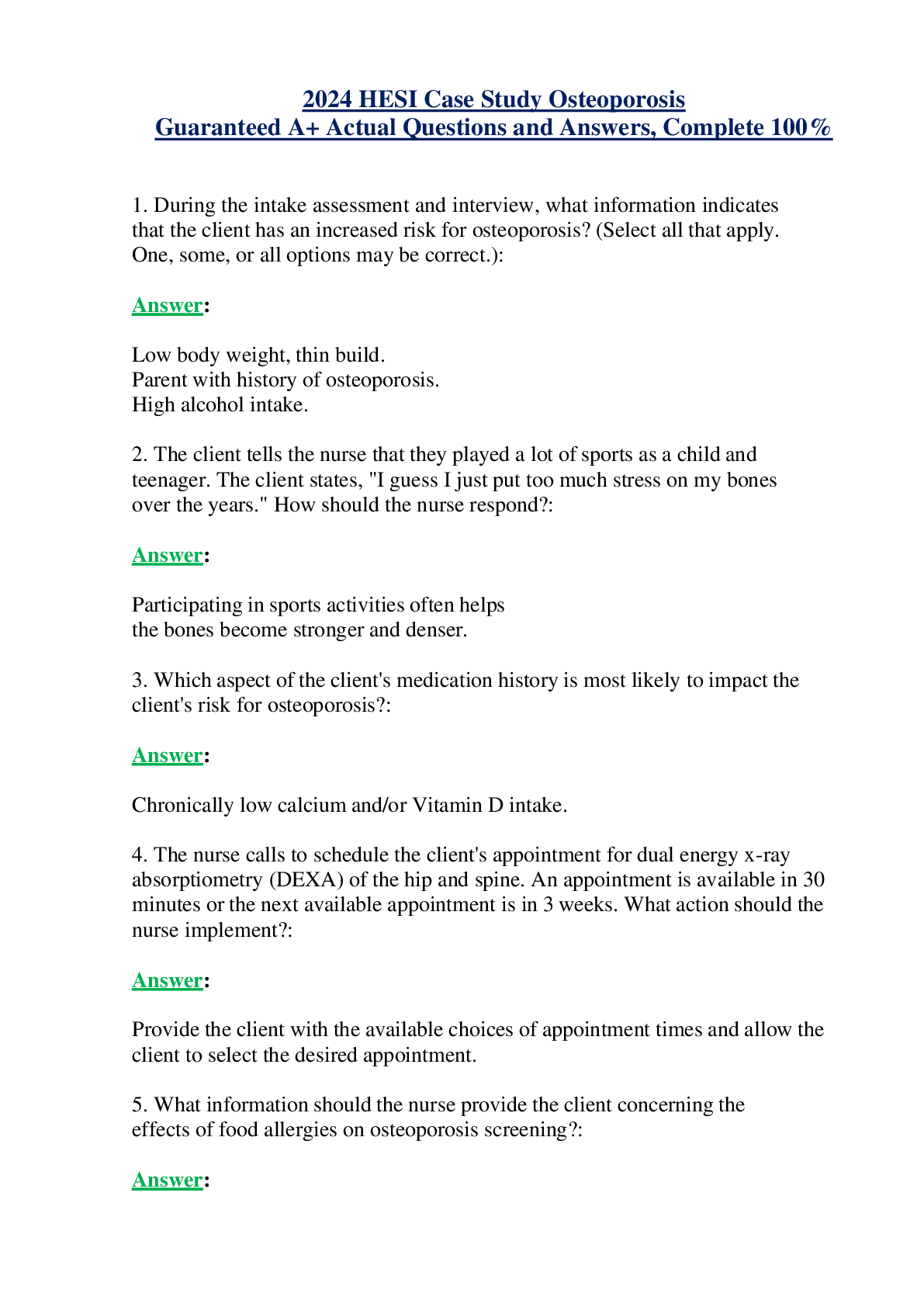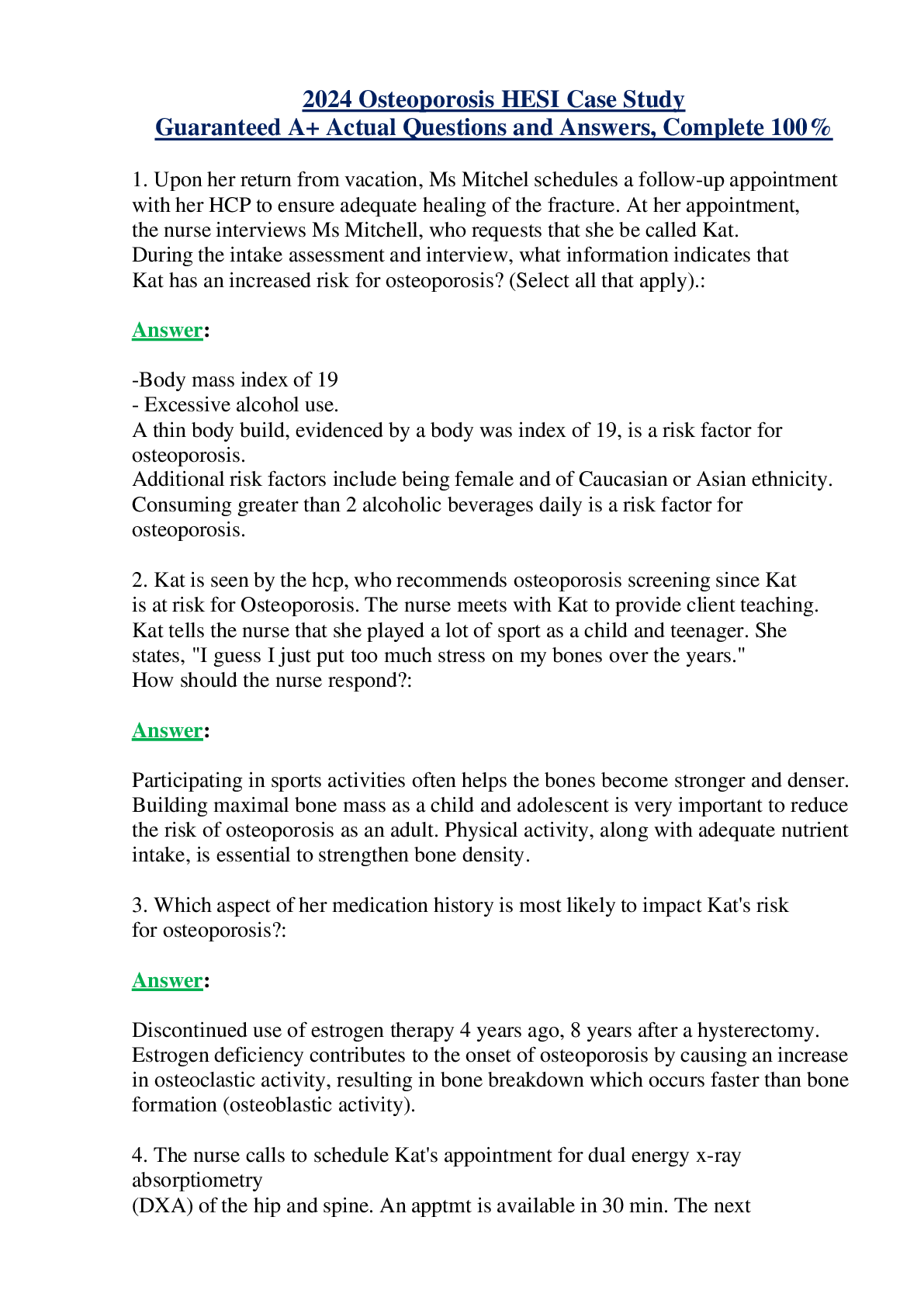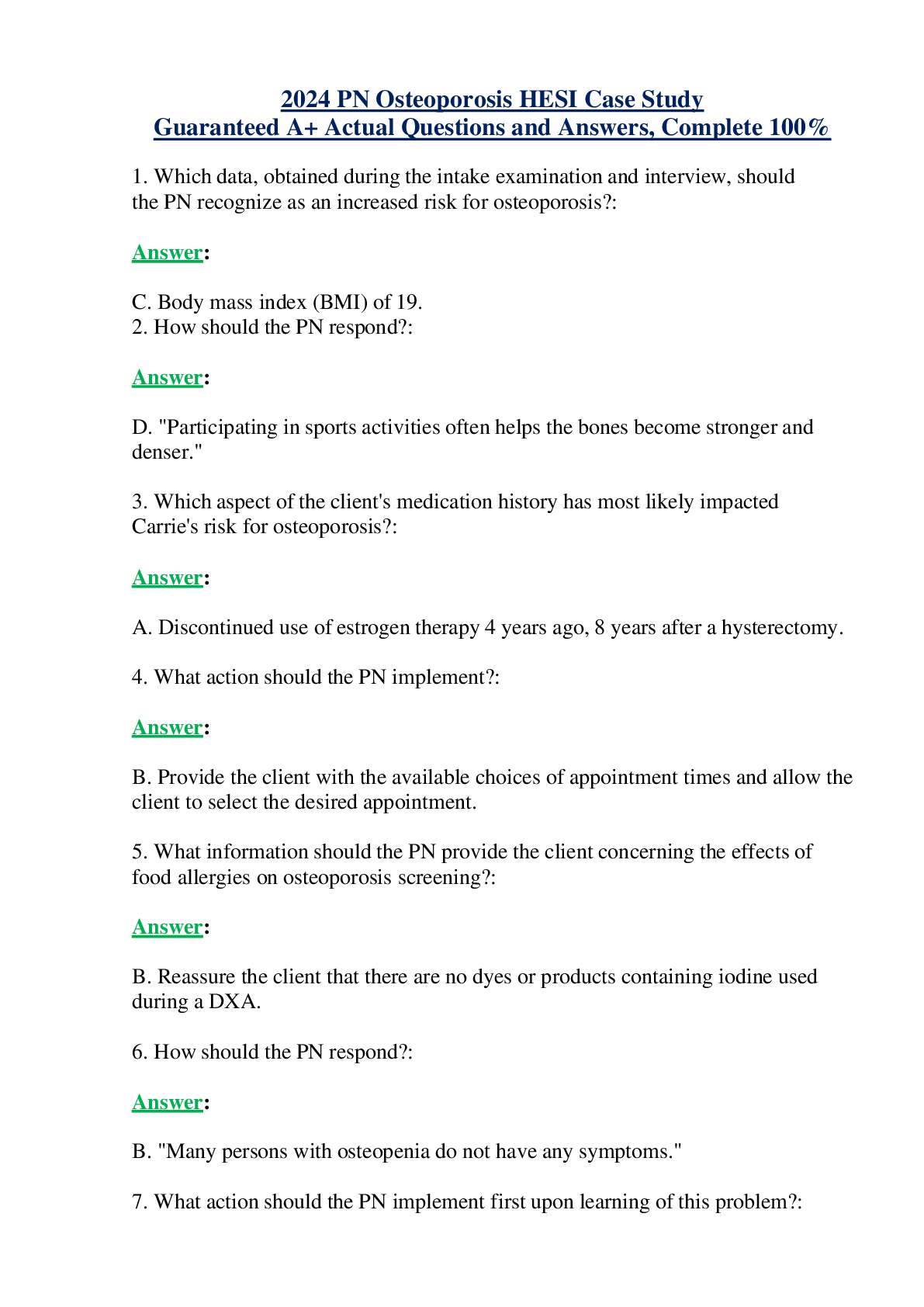*NURSING > HESI > HESI ACLS Sepsis Answered / HESI case study Advanced Cardiac Life Support (ACLS): Sepsis. (All)
HESI ACLS Sepsis Answered / HESI case study Advanced Cardiac Life Support (ACLS): Sepsis.
Document Content and Description Below
HESI case study Advanced Cardiac Life Support (ACLS): Sepsis the nurse is aware that the older adult client is at an increased risk for surgical complications due to normal physiological functions ... and comobidities. Which risk factors place the older adult client at increased risk for surgical complications? -Decreased respiratory muscle strength -Increased glomerular filtration rate -Enhanced elasticity of the arterial walls -Rigidity of the arterial walls increases the clients risk for complications Upon completing the clients assessment, the nurse determines that the client has which surgical risk factors? (select all that apply) -Metoprolol -Poor appetite -Diabetes Mellitus -Albumin 3.0 g/dL -Marital status What is the priority preoperative nursing action to prevent postoperative atelectasis? -Administer pain medication as needed -Instruct on incentive spirometer use -Obtain baseline pulse saturation -Turn and position every 2 hours Which is the likely reason for the elevated serum creatinine in the absence of kidney disease? -Anemia -Hypertension -Increased pain -Dehydration The nurse is caring for the client who has just been extubated. What should the nurse do first, after the client is extubated? -Administer supplemental oxygen -Auscultate bilateral lung sounds -Encourage cough and deep breathing -Notify the spouse of extubation One hour has passed since the client was extubated. Which nursing actions take priority at this time? (select all that apply) -Monitor respiratory rate -Assess cardiac rhythm -Measure blood pressure -Compare bilateral pulses -Instruct on mouth care Based on the nurse's assessment, which is the priority nursing action? -Give acetaminophen -Administer morphine -Monitor urine output -Assess mental status Based on the healthcare provider's (HCP) prescription, the pharmacy dispenses morphine 4mg per 1mL. How many mL should the nurse administer to the client? (numerical value only. If required, round to nearest hundredth) Upon reviewing the remaining postoperative prescriptions and comparing with preoperative prescriptions, the nurse realizes that the metformin doses are different. What is the nurse's priority action? -Request medication from the pharmacy -Administer medication as prescribed -Contact the HCP for clarification -Add the new prescription to the medication administration record (MAR) The client's spouse inquires about the client's blood sugar because she has never seen it that high, and she reports that the client isn't even eating. What is the nurse's best response? -I have sen higher. Do not worry -There are other things to worry about -Stress can increase blood sugars -The healthcare provider will discuss it with you After reviewing the client's assessment data, what is the nurse's priority action? -Reassure the client's spouse that these results are expected -Administer lispro insulin SQ as prescribed -Administer po metoprolol as prescribed -Notify the HCP of the findings In what sequence should the nurse carry out the prescriptions? The client's spouse asks why the antibiotic is being delayed to obtain lab tests. What is the nurse's best response? -It improves the chance of identifying the bacteria that is making your husband sick -This is the order that the healthcare provider wants it done -The hospital's protocol is to collect cultures before administering antibiotics -The order of events does not matter as long as your husband receives the antibiotic Based on the client's respiratory assessment, which is the priority nursing action? -Encourage coughing and deep breathing -Prepare the client for intubation -Diagnose the client with atelectasis -Delay the chest x-ray until the morning After giving report, the nurse transfers Mr. Azizi back to the MICU. Which of the client's signs and symptoms cue the MICU nurse to determine if the client continues to have sepsis? (Select all that apply) -Hypothermia -Altered mental status -Tachycardia -Leukocytosis -Tachypnea The nurse knows that the client is in which acid base imblanace? -Metabolic Acidosis -Respiratory Acidosis -Metabolic Alkalosis -Respiratory Alkalosis Which is the primary cause of respiratory alkalosis? -Hypoxemia r/t acute lung disorders -Hypoxia r/t renal calculi -Lactic acidosis secondary to diabetes -Hypoventilation due to increas CO2 What is the nurse's first action? -Call the rapid repoonse team -Activate a code -Assess the client -Monitor telemetry Using the American Heart Association's Basic Cardiac Life Support (BCLS) algorithm, what is the nurse's priority action? -Assess carotid artery -Monitor mental status -Check blood pressure -Determine heart rhythm The nurse assessing the client's carotid artery reports no pulse is found. What is the nurse's priority action? -Hug the client's spouse -Activate a code -Begin compressions -Shock the client's chest The code team arrives with the crash cart. The carotid artery is reassessed and there is still no pulse. Cardiac leads are placed and pulseless ventricular tachycardia is confirmed. Which is the priority nursing action? -Shock the client's chest -Administer epinephrine -Continue compressions -Escort the client's spouse out After shocking the client's chest, what is the nurse's next action? -Administer another shock -Begin chest compressions -Initiate rescue breathing -Monitor heart rhythm The client remains in pulseless ventricular tachycardia and is unresponsive. The team intubates him and administers the second schock. What medication does the nurse anticipate administering after the second shock? -Atropine -Lidocaine -Epinephrine -Amiodarone Which is the primary reason for administering epinephrine 1mg every 3-5 minutes during a cardiac arrest? -Increases cardiac output -Causes massive vasodilation -Protects the kidneys -Treats dysrhythmias Despite the team's efforts, Mr. Azizi remains unresponsive and the telemetry monitor shows asytole. Mrs. Azizi, who has been in the room the entire time, asks the team to stop. She can not bear to see her husband's chest "crushed" anymore. What is the nurse's next action? -Continue compressions -Escort the client's spouse out of the room -Stop coding the client -Document the spouse's remark Thirty minutes after ending the code, Mr. Azizi succumbs to his illness. His spouse is crying uncontrollably. She begins to talk about how she is going to have a hard time without her husband of 30 years. What is the nurse's most therapeutic response? -Begin postmortem care -Inquire about the couple's children -Actively listen as she speaks -Contact the hospital chaplain [Show More]
Last updated: 1 year ago
Preview 1 out of 6 pages
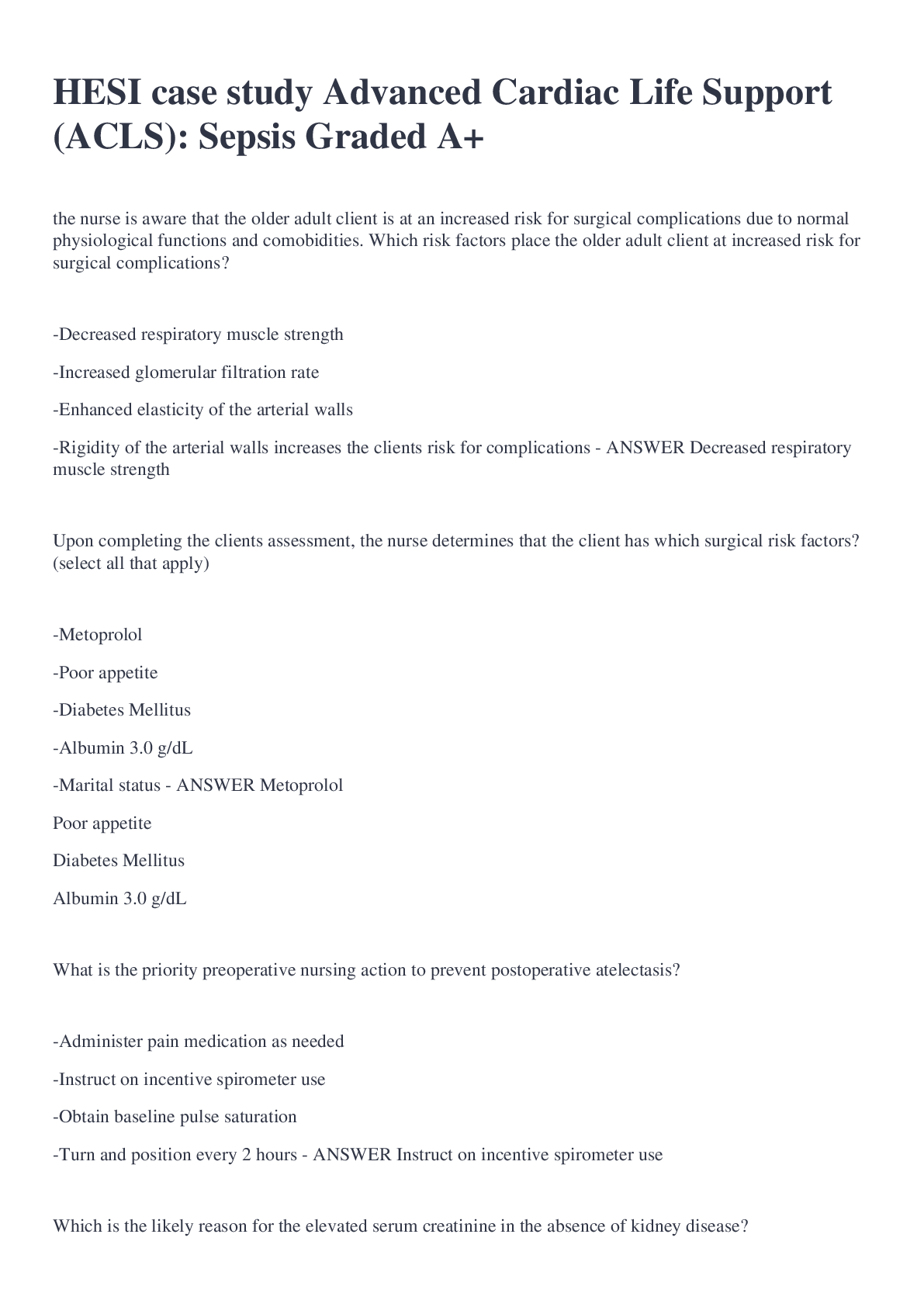
Reviews( 0 )
Document information
Connected school, study & course
About the document
Uploaded On
Apr 01, 2022
Number of pages
6
Written in
Additional information
This document has been written for:
Uploaded
Apr 01, 2022
Downloads
0
Views
214

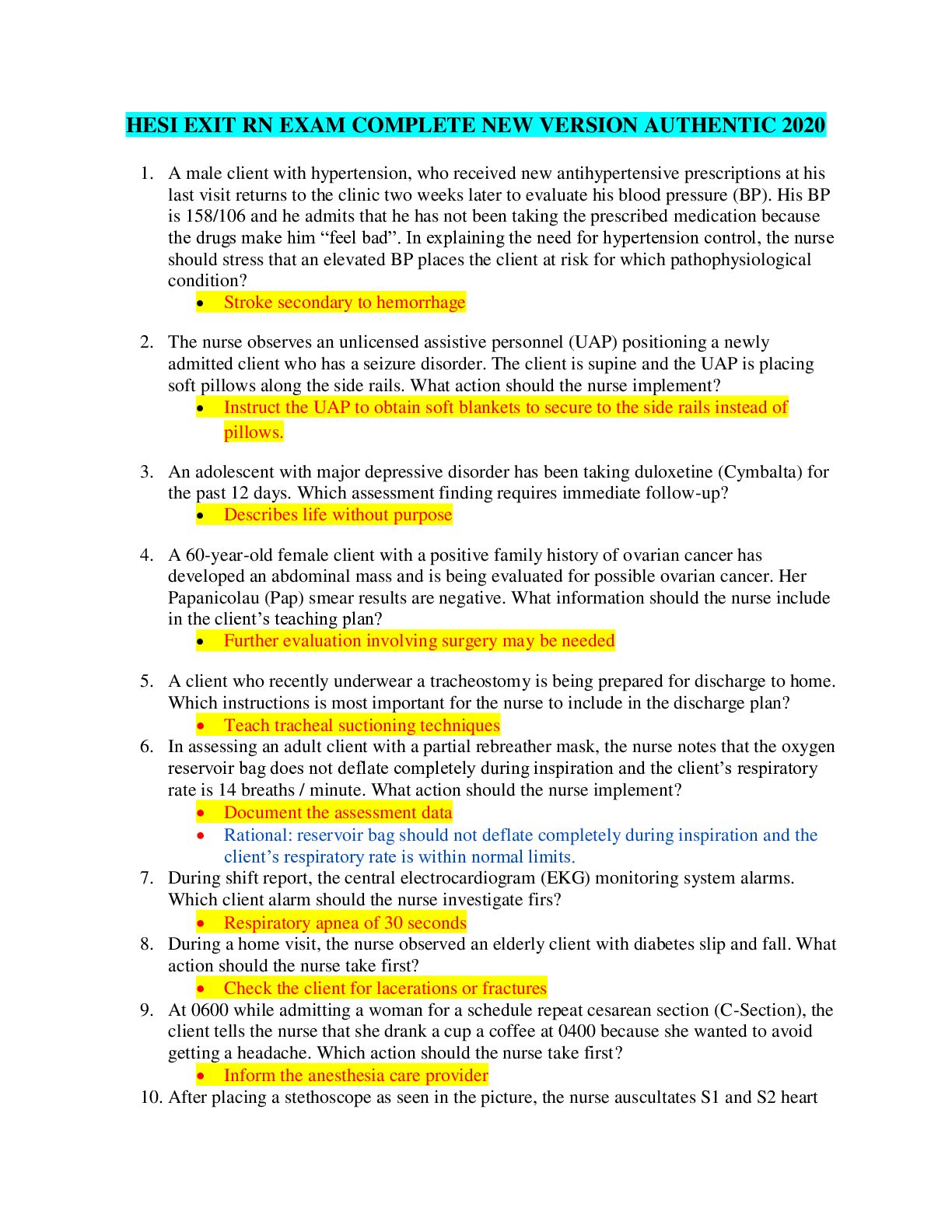
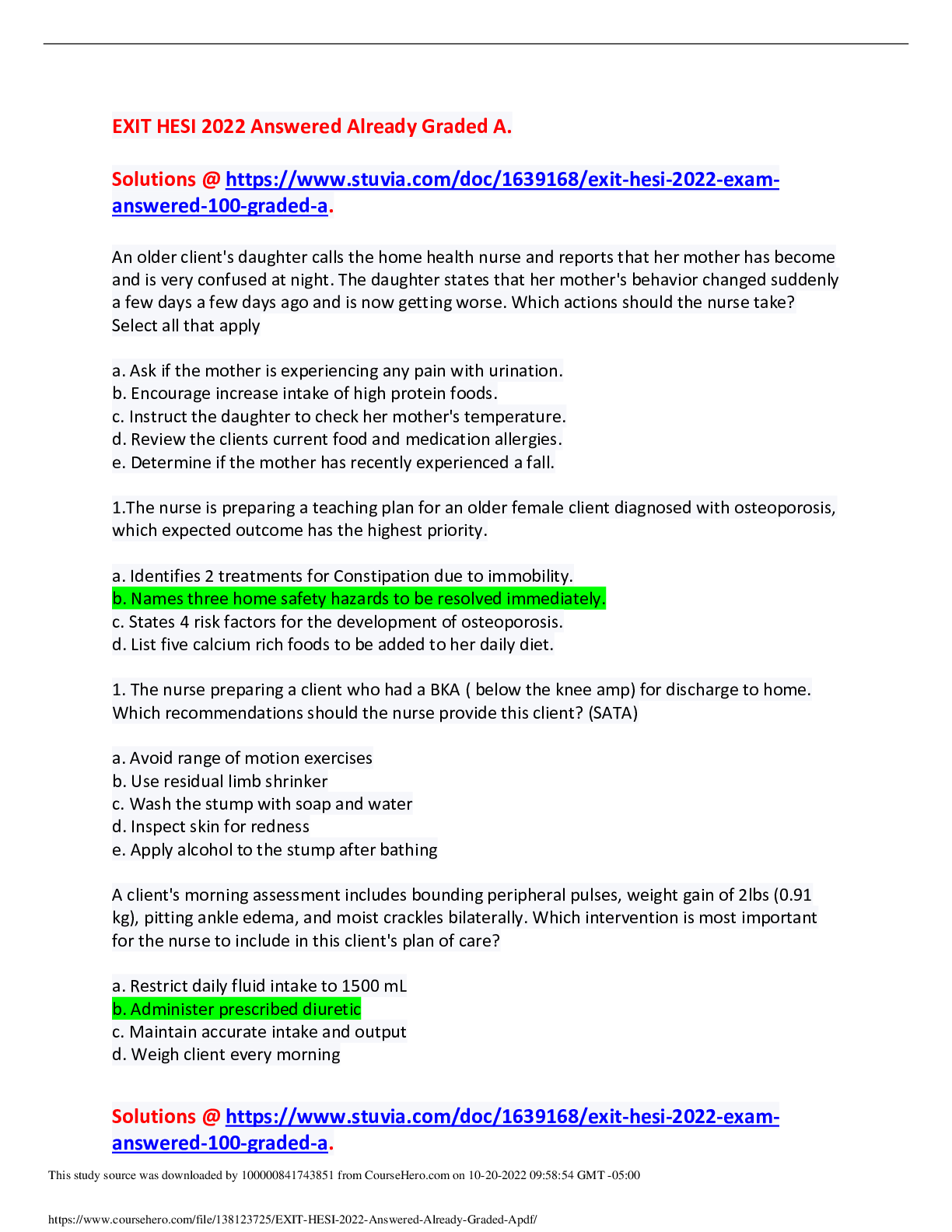

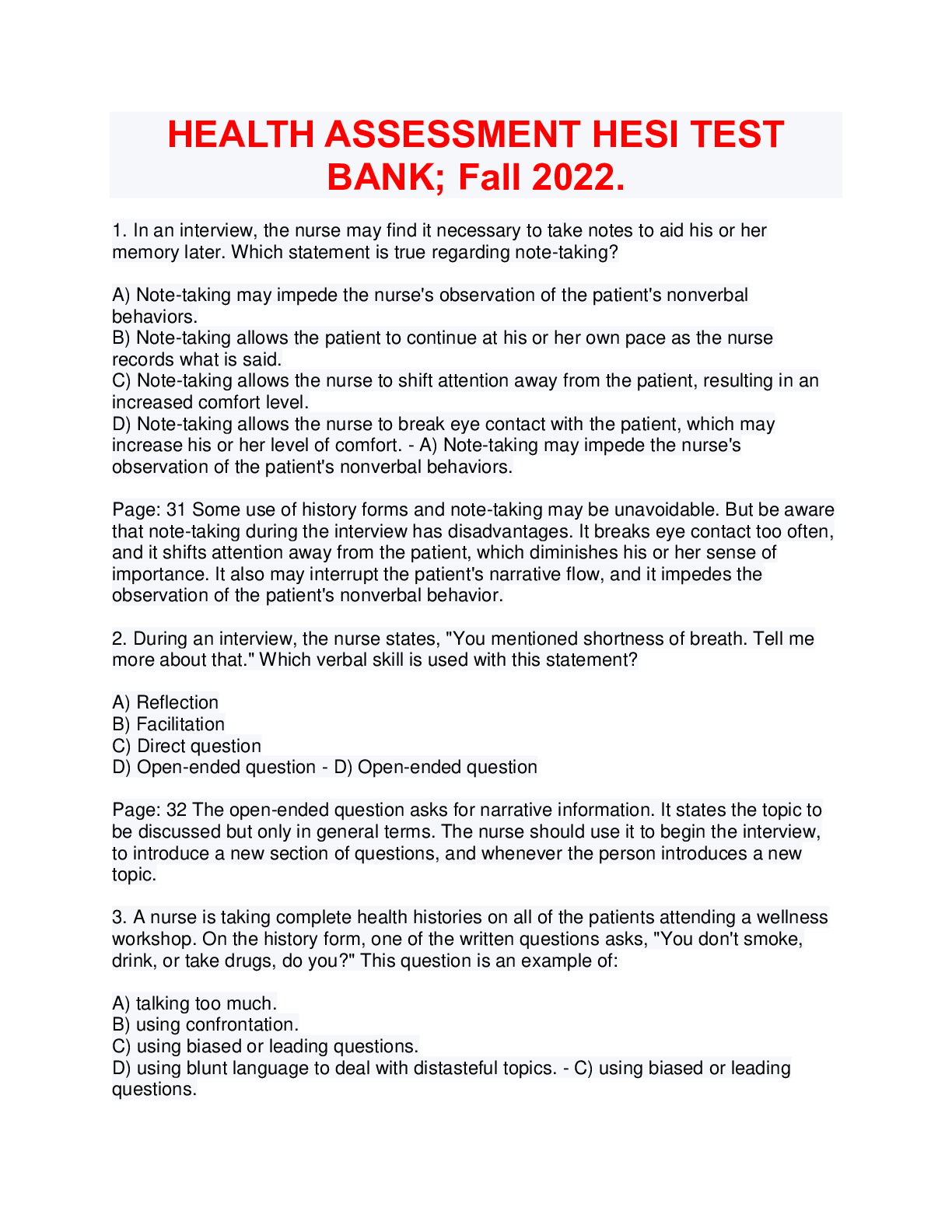

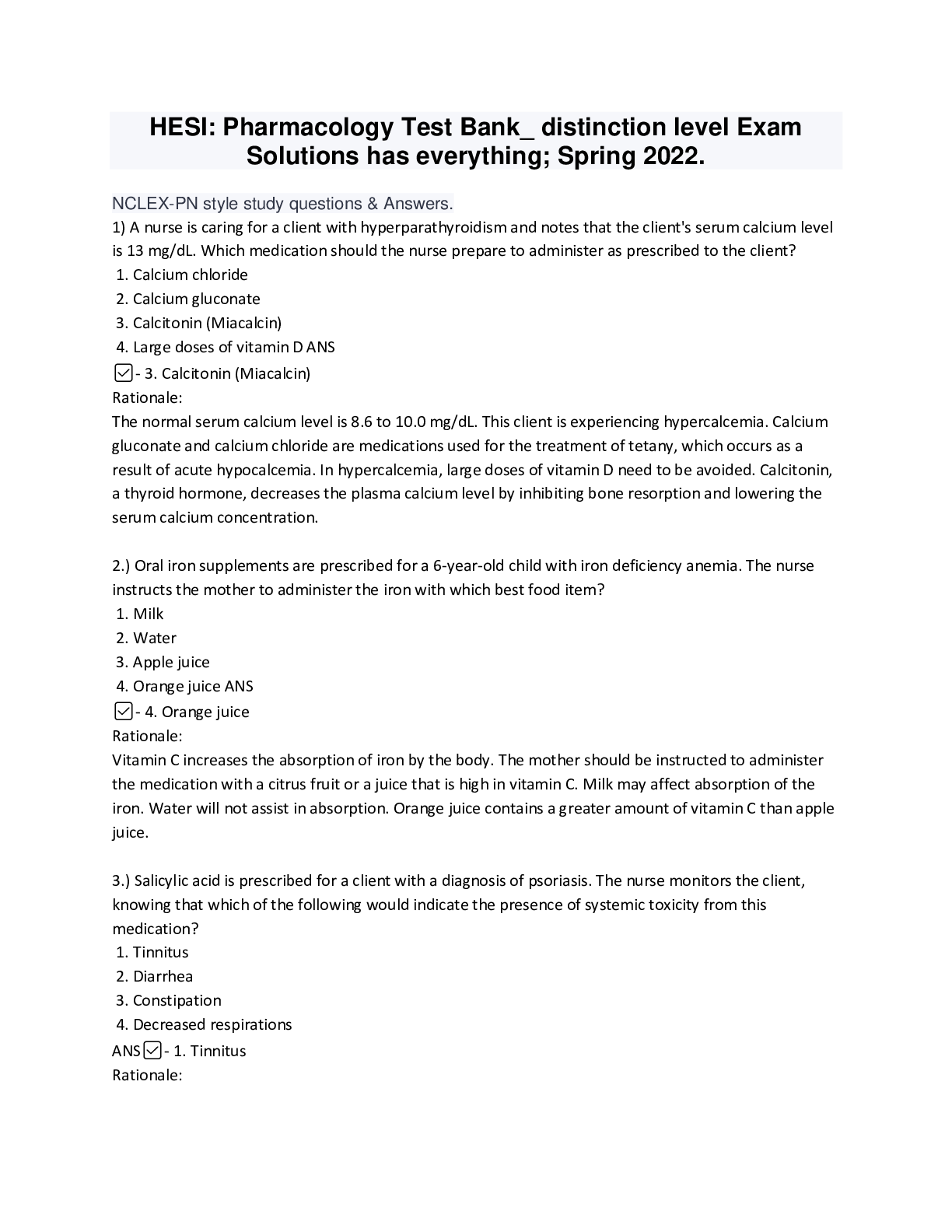
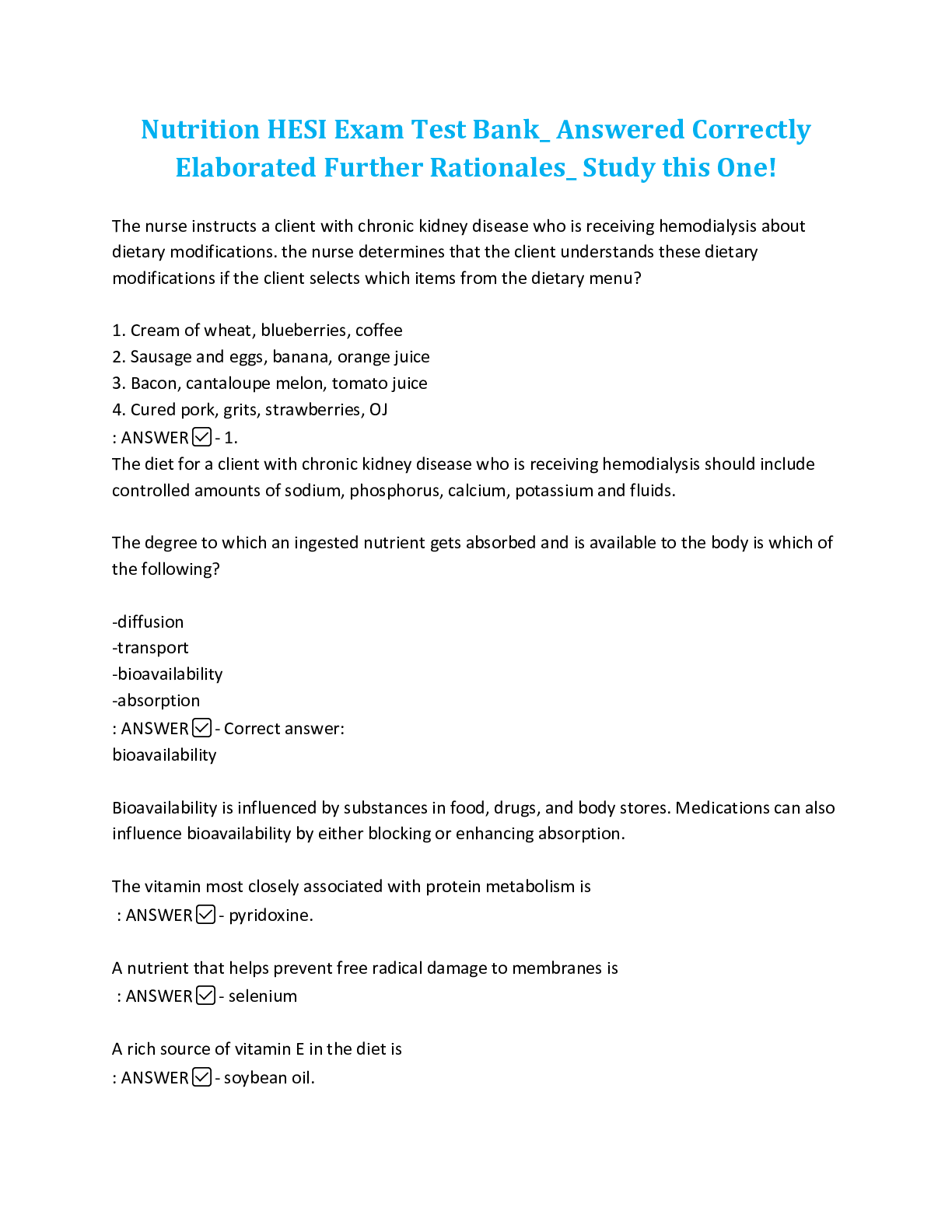
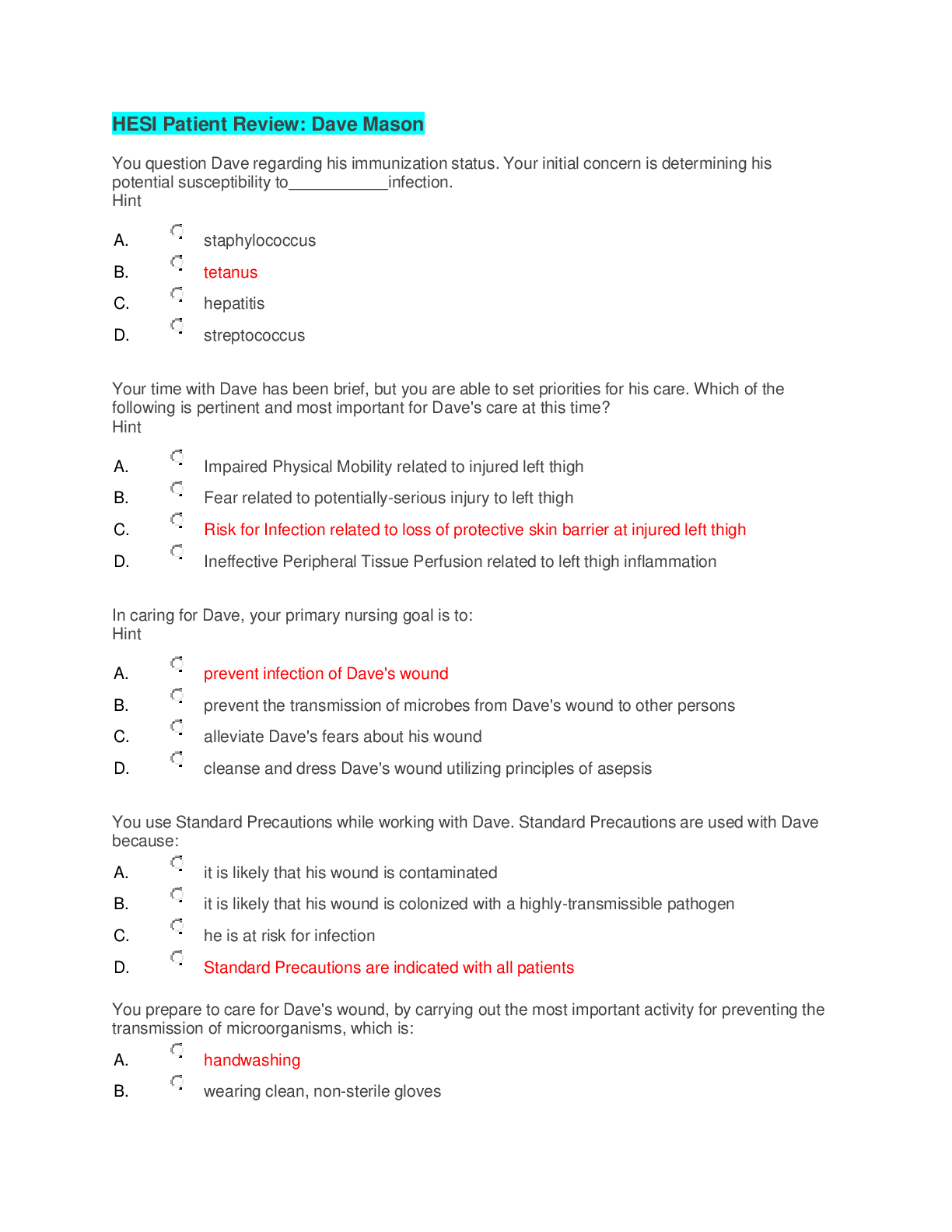
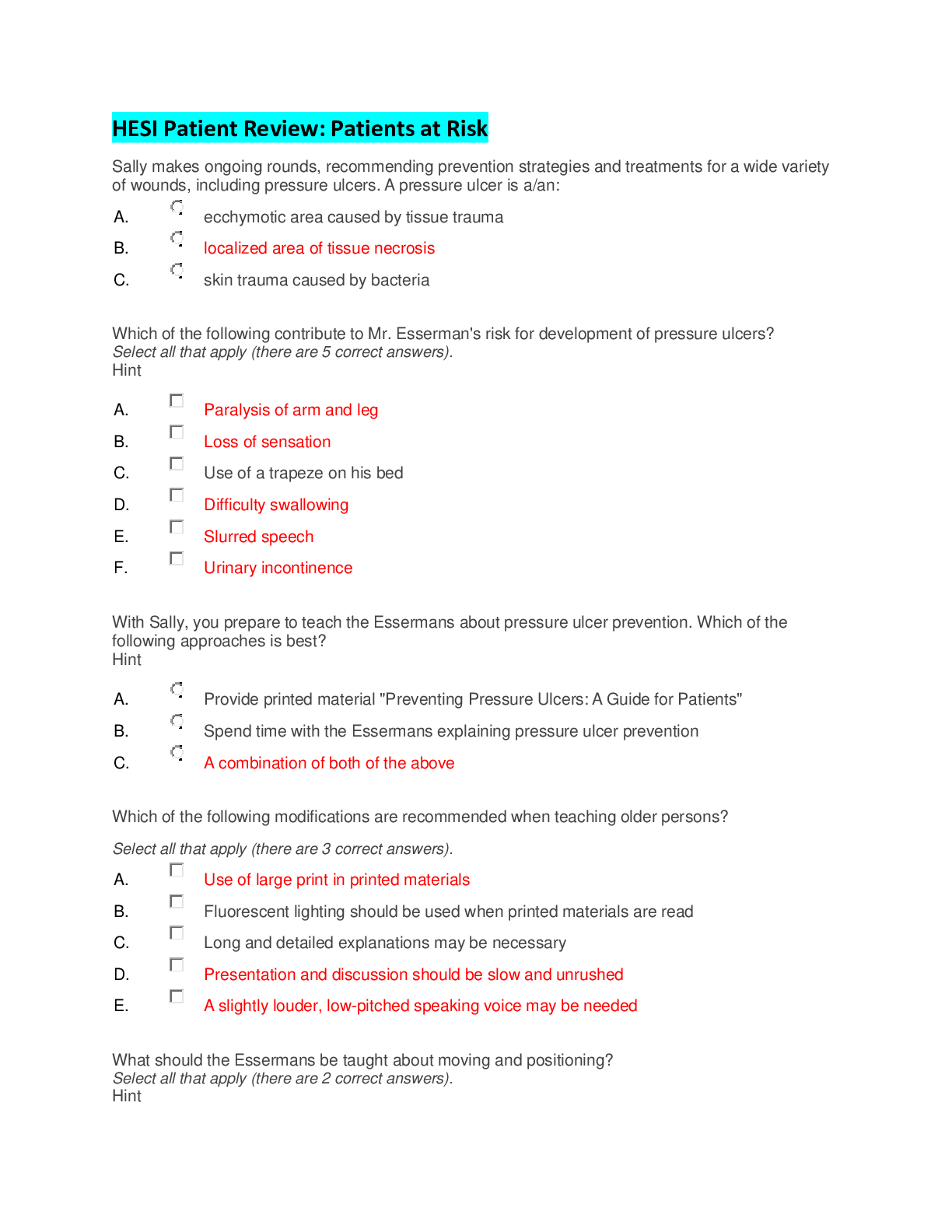

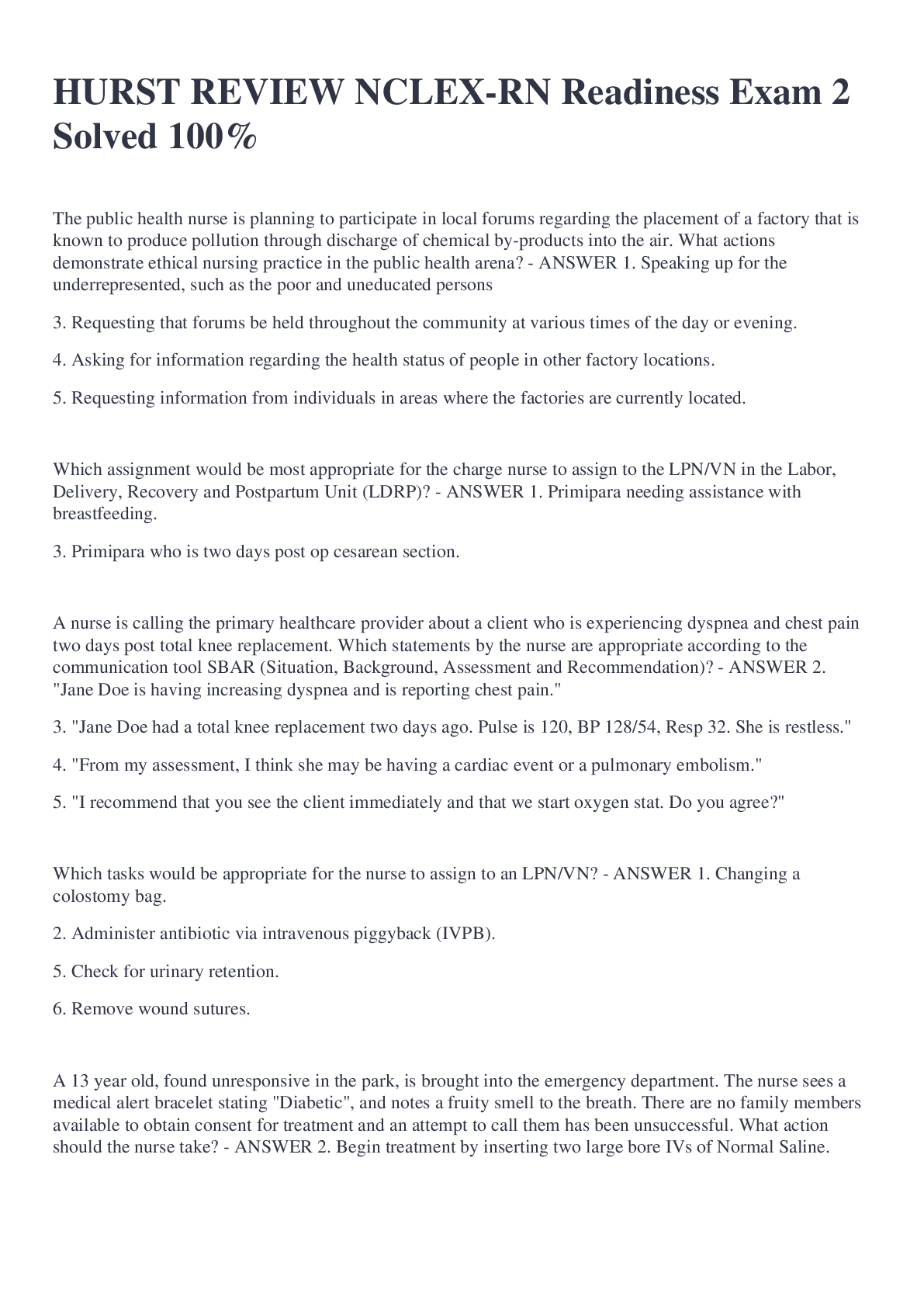
.png)

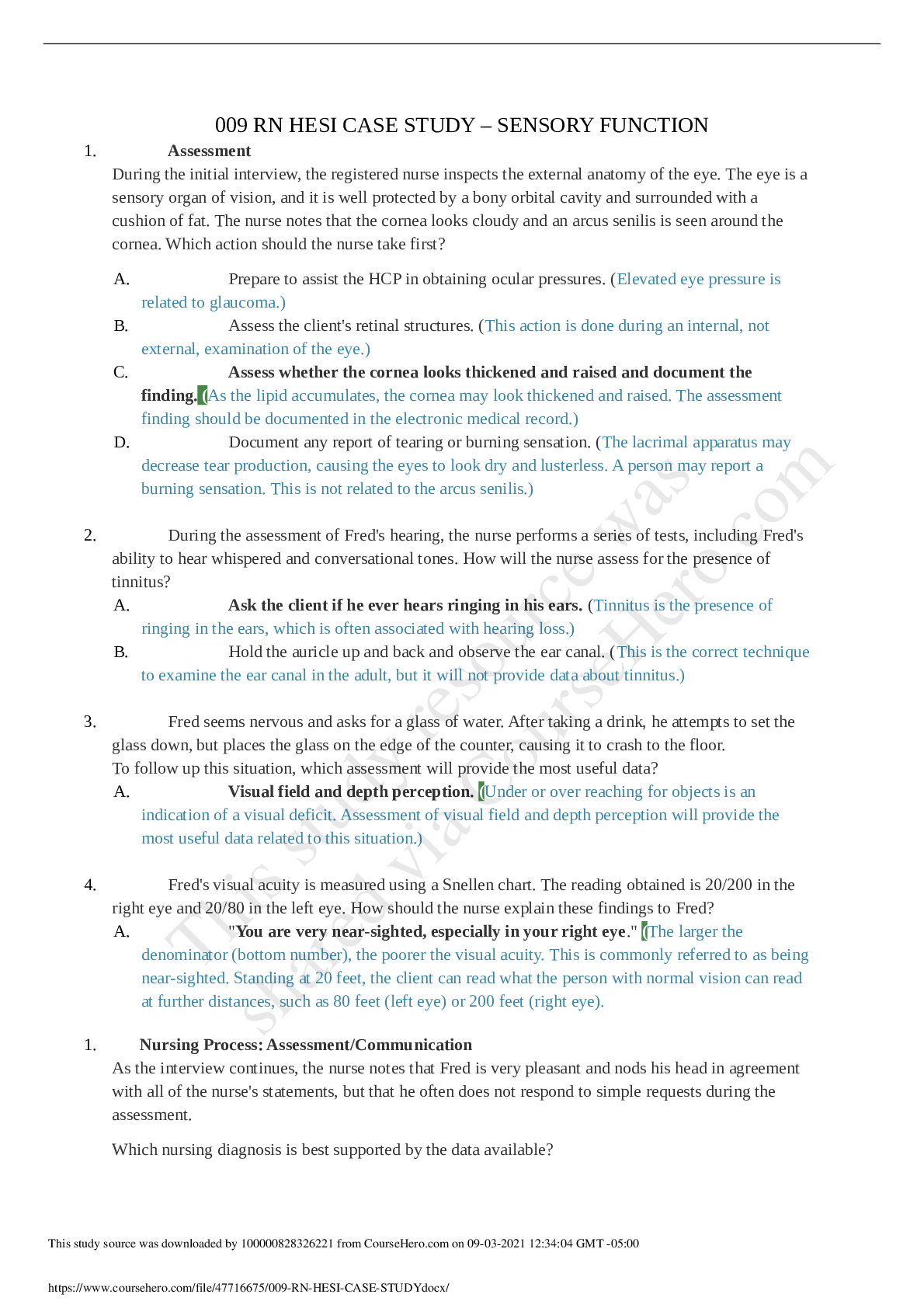
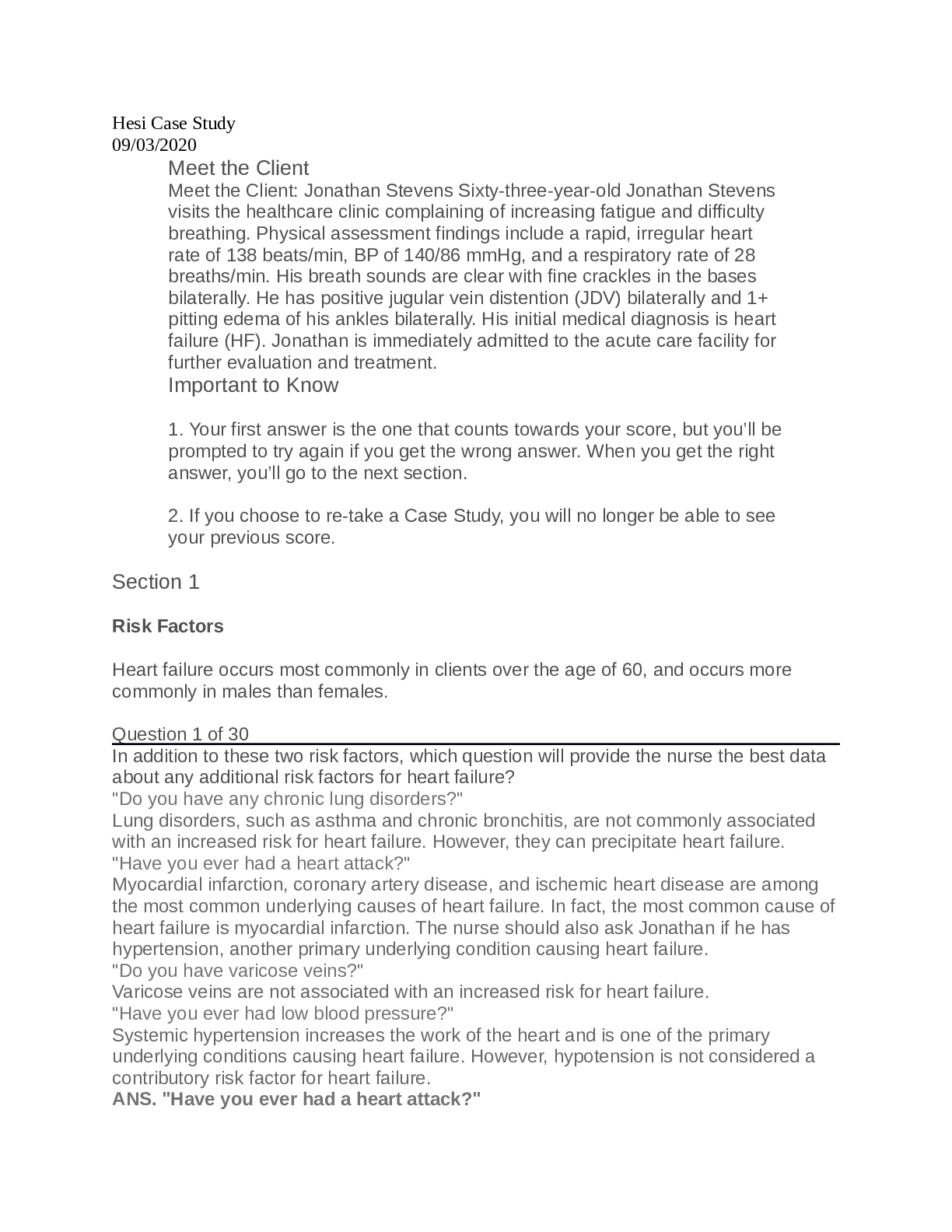
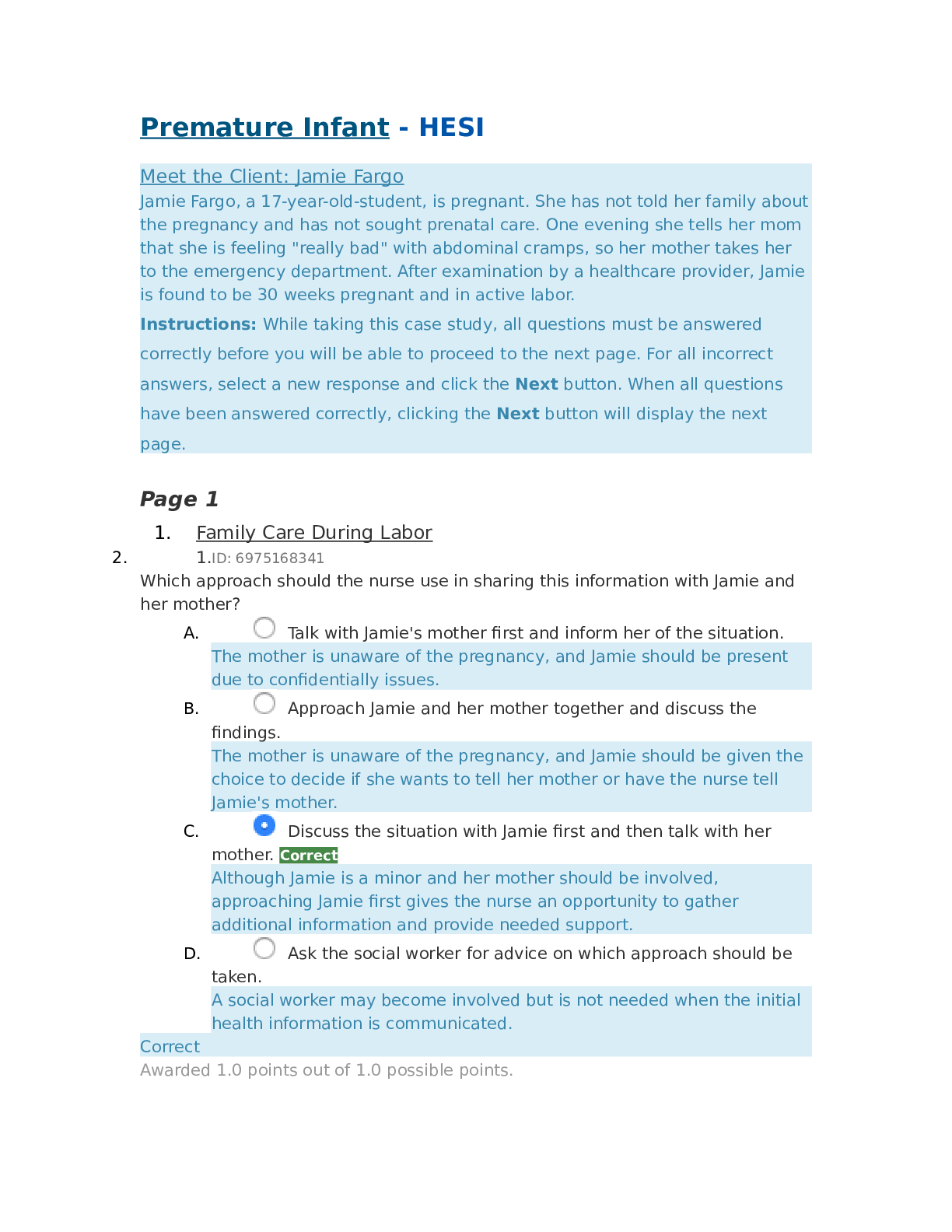
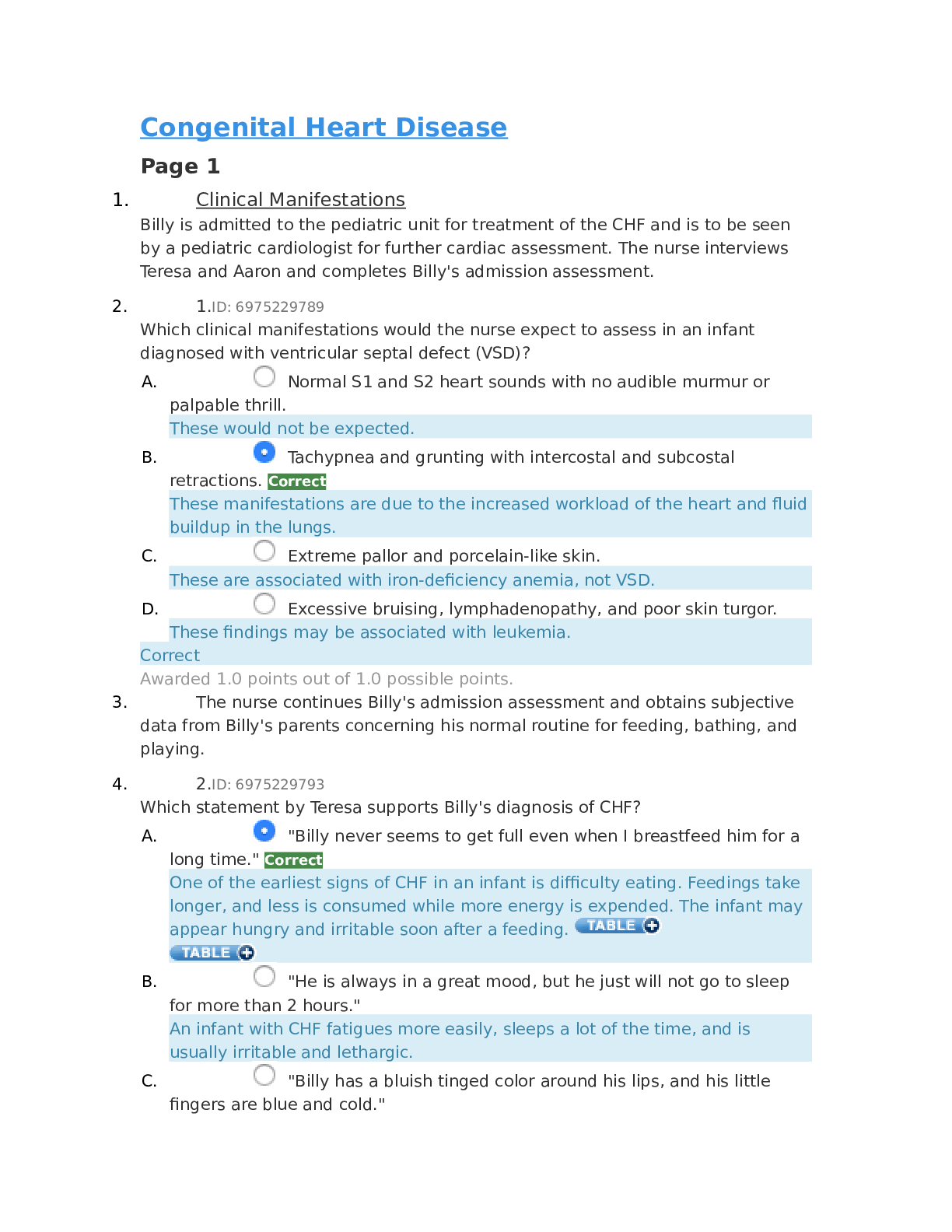
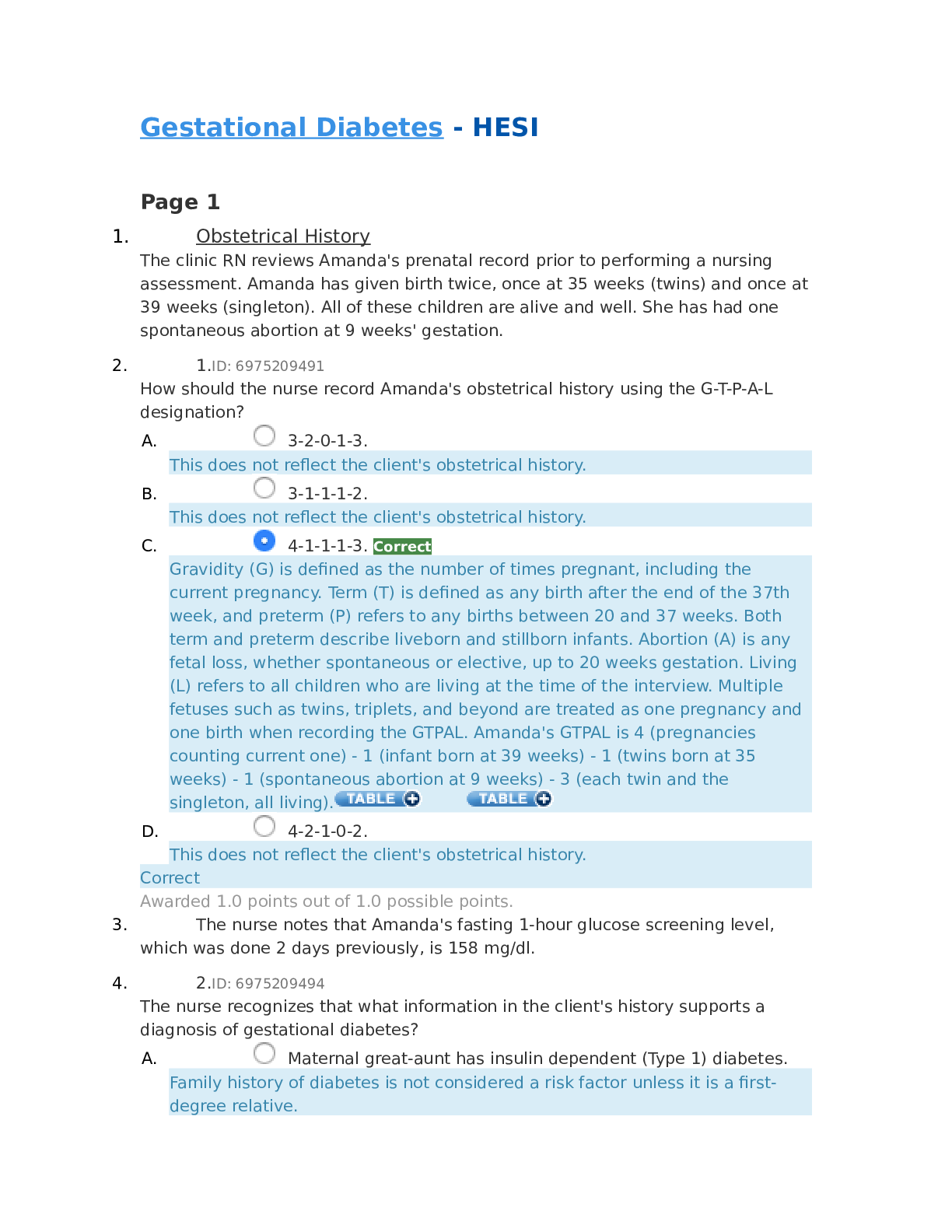
.png)
.png)
.png)
.png)






